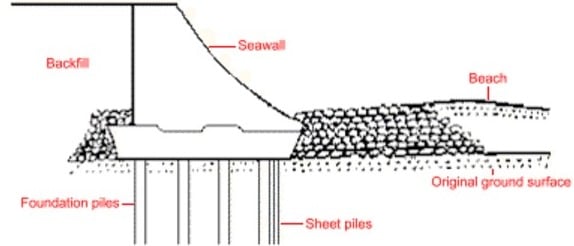Some Known Facts About Shore Protect Team.
Wiki Article
Not known Details About Shore Protect Team
Table of ContentsWhat Does Shore Protect Team Do?What Does Shore Protect Team Do?The Ultimate Guide To Shore Protect TeamThe Single Strategy To Use For Shore Protect Team9 Easy Facts About Shore Protect Team DescribedOur Shore Protect Team StatementsAn Unbiased View of Shore Protect Team
Decrease in building worth: As the area tourist is impacted by disintegration, so after that is the economic situation. Customers are much less likely to look for a coastline residence that might be damaged anytime by the impending flooding and erosion emergency. In turn, home worth can drop profoundly and impact the whole area.Whether a coastline is just tiny and crowded or has to shut completely for the safety of the environment and close-by residential or commercial properties, this significantly affects tourist. In turn, regional economies are influenced (https://www.scribd.com/user/909807393/Shore-Protect-Team). Risk of injury: The increased danger of flooding and structural failures triggers an enhanced risk of injury to nearby vacationers and community members

Shoreline stablizing is straight associated to their job. Waterside resorts: Because shoreline erosion influences tourism, it impacts the success of waterfront hotels.
Unknown Facts About Shore Protect Team
Coastal business companies: No tourists implies no company. Coastal state parks: State parks that exist along coasts are at risk of damages.Tough stablizing uses man-made structures as security to manage disintegration. Many kinds of tough stablizing like seawalls and sheet metal are not excellent for shoreline stabilization.
Indicators on Shore Protect Team You Need To Know
There's also not nearly enough proof of their effectiveness depending on the kind of coastline and regional problems. Difficult stabilization strategies have a tendency to be more difficult to install and don't match the all-natural visual, sticking out like an aching thumb and harming local environments in numerous scenarios. Coastline nourishment is the process of including lost sand and sediment back to beaches after erosion has occurred.TrapBags help in the process of coastline nutrition by shielding natural ecological communities and permitting plants to expand. While this process can be costly and is not permanent, the pros have a tendency to surpass the cons. TrapBag obstacles offer lots of buildings that make them excellent for coastal and shore disintegration security. They're: Eco-friendly: You can make use of native soil both to surround and to fill up the TrapBags.

Shore Protect Team - An Overview
Easy to mount: Reduce of setup means TrapBags can be released promptly in the occasion of an emergency. They can also be mounted without any type of hefty machinery. Economical: TrapBags are excellent for both tiny and huge areas of coastline. They offer a budget-friendly service to cover projects of any type of dimension.The proper seawall layout depends on location-specific elements, including bordering disintegration procedures. There are three primary types of seawalls: vertical, rounded, tipped, and piles (see table listed below).
Natural barriers, such as reef and mangrove forests, prevent the spread of tsunamis and the circulation of seaside waters and alleviated the flood and surge of water. A cost-benefit strategy is an effective means to figure out whether a seawall is suitable and whether the advantages are worth the expenditure.
The Of Shore Protect Team
A seawall is a static function which can contrast with the dynamic nature of the coastline and hinder the exchange of debris between land and sea. Advantages and drawbacks of seawalls according to Short (1999) Benefits Downsides Lengthy term remedy in contrast to soft coastline nutrients (http://citiezz.com/directory/listingdisplay.aspx?lid=73161).
This can cause beaches to dissipate, rendering them pointless for beach goers. Usually, seawalls can be a successful means to manage seaside disintegration, yet just if they are constructed well and out of materials that can endure the pressure of continuous wave power.
Shore Protect Team Things To Know Before You Get This
The ideal seawall style relies on location-specific aspects, including bordering erosion procedures. There are three primary types of seawalls: vertical, bent, stepped, and piles (see table below).Natural barriers, such as reef and mangrove forests, avoid the spread of tidal waves and the circulation of coastal waters and mitigated the flood and surge of water. A cost-benefit method is an efficient method to establish whether a seawall is ideal and whether the benefits deserve the cost.
Some Known Facts About Shore Protect Team.
A seawall is a static function which can clash with the dynamic nature of the coastline and hinder the exchange of debris in between land and sea. Benefits and negative aspects of seawalls according to Short (1999) Advantages Disadvantages Lengthy term service in comparison to soft coastline sustenance.
This can cause beaches to dissipate, providing them ineffective for beach goers. Typically, seawalls can be a successful method to regulate coastal disintegration, but only if they are built well and out of products that can stand up to the pressure of recurring wave energy.
Report this wiki page